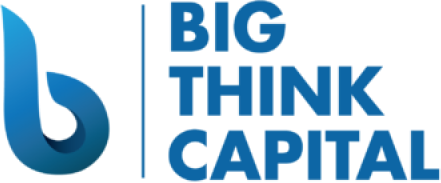The Impact of the Fed’s Recent Interest Rate Hike on Your Small Business Financing Options
Estimated reading time: 5 minutes
- Understand how rising interest rates affect borrowing costs and access to credit.
- Consider diversifying your financing sources to mitigate risks.
- Stay informed about new funding options and regulatory changes.
- Practice effective cash flow management to enhance financial decisions.
Table of Contents
- Understanding the Federal Reserve’s Decision
- How Interest Rate Hikes Affect Small Business Financing
- Navigating the New Financing Landscape
- Practical Takeaways for Business Owners
- The Role of Big Think Capital in Your Financing Journey
- Conclusion
Understanding the Federal Reserve’s Decision
In early 2025, the Federal Reserve announced a significant increase in interest rates to combat inflation and stabilize the economy. This decision comes as part of a broader strategy to manage the economic recovery from the impacts of the pandemic. The Fed’s rate hikes are designed to reduce consumer spending and borrowing, which are key drivers of inflation. For small businesses, this funding environment can present both challenges and opportunities.
According to the Fed’s economic projections, further increases in interest rates may occur if inflation continues to outpace targets. As of January 2025, the interest rate stands at 5.75%, a notable increase from 4.75% just a year prior. This steep rise underscores the need for small business owners to reevaluate their financing strategies.
How Interest Rate Hikes Affect Small Business Financing
Increased Borrowing Costs
One of the most direct impacts of an interest rate hike is the increased cost of borrowing. Higher rates mean that small businesses will face steeper monthly payments and increased overall interest expenses. This change can deter many owners from pursuing traditional loan products, such as SBA loans or lines of credit, which are directly tied to market interest rates.
Limited Access to Credit
As the cost of borrowing rises, financial institutions may tighten their lending criteria to mitigate risk. This means that small businesses, especially those with less established credit histories, may find it more challenging to access funding. According to the Federal Reserve’s 2025 Small Business Credit Survey, nearly 35% of small businesses reported declining access to financing due to rising interest rates.
Changes in Funding Product Popularity
As traditional financing becomes more expensive, many business owners are shifting towards alternative funding solutions. For instance, equipment financing, merchant cash advances, and working capital advances often offer more flexible terms that align better with immediate cash flow needs. Business owners are encouraged to explore these options, which tend to remain more accessible despite upward interest pressure.
Navigating the New Financing Landscape
Understanding the dynamics of the current financing environment can help you identify the right funding solutions for your business. Here are several strategies to consider:
Prioritize Cash Flow Planning
Effective cash flow management has never been more important. With rising costs associated with loans, ensuring you have a clear understanding of your cash inflow and outflow will help you make informed financing decisions. Utilize cash flow projections to see where you stand financially and to determine how much funding you truly need.
- Keep detailed financial records that include income, expenses, and projections for future earnings.
- Adjust your budget to account for increased borrowing costs and potential decreases in sales.
Diversify Your Financing Sources
In light of the Fed’s interest rate hikes, diversifying your funding sources can buffer your business against high borrowing costs. Explore the following alternatives:
- Equipment Financing: This option allows you to acquire essential tools without large upfront costs. Payments are typically spread over time, making it easier to manage cash flow.
- Merchant Cash Advances: If you have steady credit card sales, an MCA can offer quick access to working capital based on future sales. This approach often has less stringent credit requirements compared to traditional loans.
- Lines of Credit: A flexible line of credit can provide funds as needed, allowing you to draw money during lean periods without facing high interest immediately.
Stay Informed on Funding Options
Regulatory changes often open up new avenues for small business funding. Keep abreast of what’s available in the lending landscape. For instance, the Small Business Administration is continually adapting its programs to support entrepreneurs, especially in challenging economic environments. Regularly check the SBA website and other reputable financial news sources to stay updated.
Practical Takeaways for Business Owners
- Embrace Flexible Financing: In an environment of rising interest rates, look for financing options that offer flexibility. Equipment financing and merchant cash advances are excellent alternatives to traditional loans.
- Enhance Your Creditworthiness: Take proactive steps to improve your credit score. Regularly review your credit report, pay your bills on time, and curb unnecessary debt to improve your likelihood of securing financing at favorable terms.
- Plan Strategically: Regular cash flow assessments will help you understand your financial needs and avoid overextending yourself. Ensure you have a clear strategy for any borrowed funds to maintain financial health amid higher interest rates.
The Role of Big Think Capital in Your Financing Journey
At Big Think Capital, we understand the unique challenges that small businesses face, especially in a fluctuating interest rate environment. Our objective is to connect you with the right funding solutions tailored to your business needs. Whether you’re exploring SBA loans, equipment financing, or alternative funding solutions, we are here to guide you through the complexities of the financing landscape.
Our team of experts can help you evaluate your options and access the funding you need to thrive in 2025 and beyond. We are dedicated to enhancing your financial knowledge and providing you with tools to make confident decisions.
Conclusion
As small business owners navigate the implications of the Federal Reserve’s recent interest rate hike, the priority should be smart, informed financial planning and strategic funding choices. Taking proactive steps now can position your business for success despite uncertainties in the economic landscape.
If you are interested in exploring your financing options or have questions about the best strategies for your business, reach out to Big Think Capital. Our team is ready to assist you with personalized funding solutions. Learn more about how we can help at bigthinkcapital.com or speak with a funding expert today.






